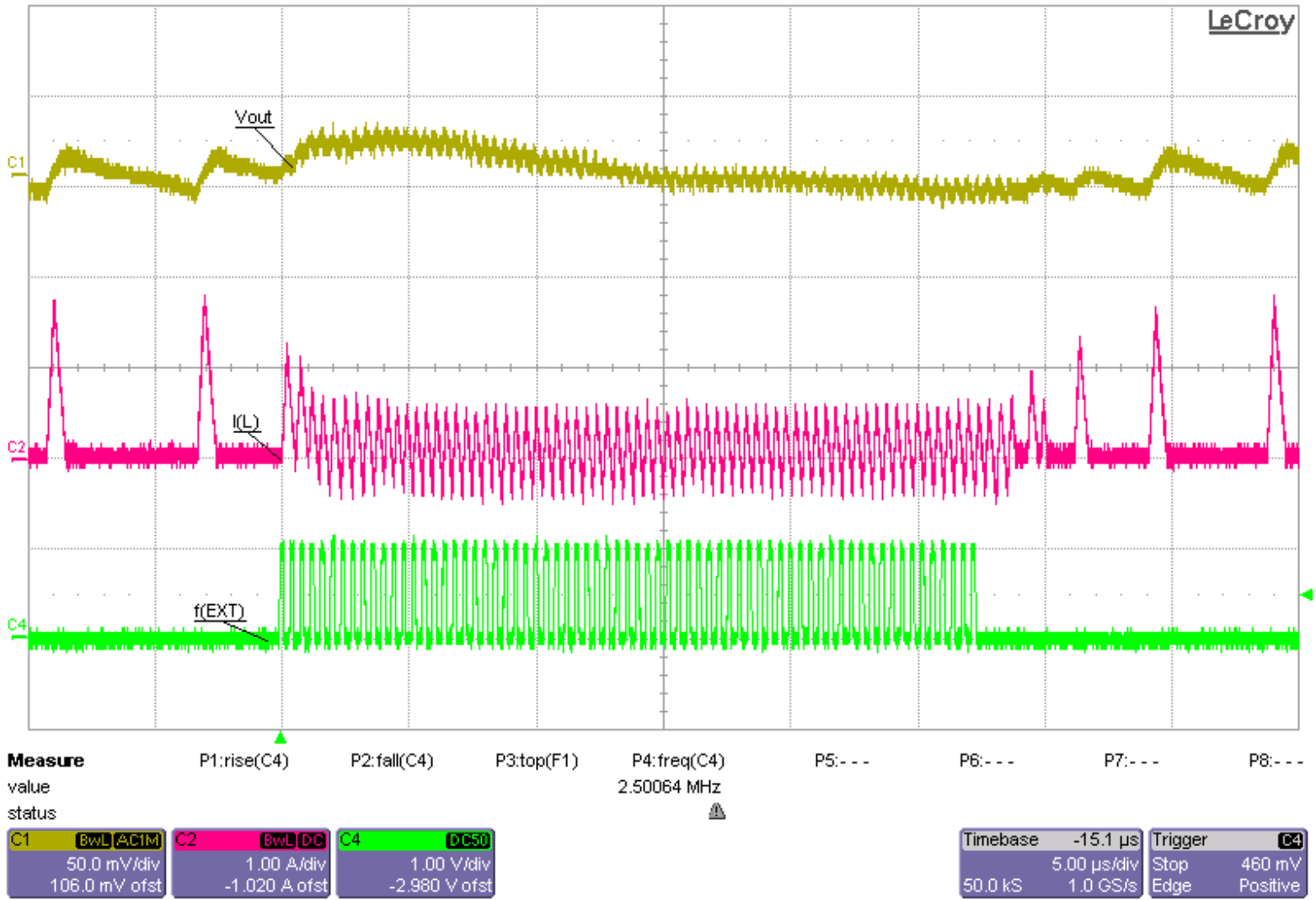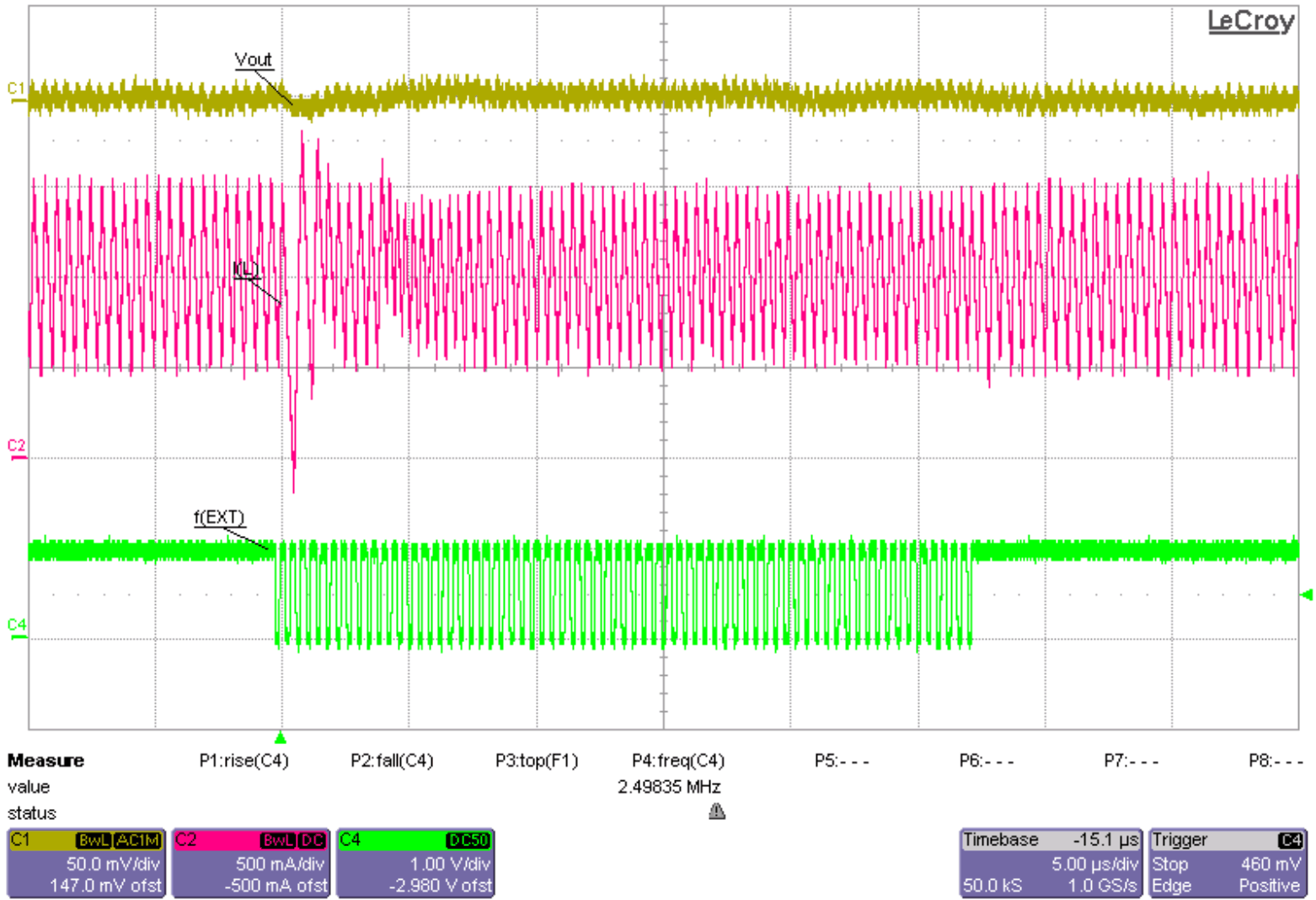ZHCSKB4B September 2019 – July 2024 TPSM82810 , TPSM82813
PRODMIX
- 1
- 1 特性
- 2 应用
- 3 说明
- 4 Device Comparison Table
- 5 Pin Configuration and Functions
- 6 Specifications
- 7 Parameter Measurement Information
- 8 Detailed Description
- 9 Application and Implementation
- 10Device and Documentation Support
- 11Revision History
- 12Mechanical, Packaging, and Orderable Information
9.3.2 Synchronizing to an External Clock
The TPSM8281x can be synchronized by applying a clock on the MODE/SYNC pin. There is no need for any additional circuitry. See Figure 10-23. The clock can be applied, changed, and removed during operation. The value of the RCF resistor is recommended to be chosen such that the internally defined frequency and the externally-applied frequency are close to each other to have a fast settling time to the external clock. Synchronizing to a clock is not possible, if the COMP/FSET pin is connected to Vin or GND. Figure 10-24 and Figure 10-25 show the external clock being applied and removed. When an external clock is applied, the device operates in PWM mode.
 Figure 9-31 Frequency Synchronization
Figure 9-31 Frequency Synchronization
| VIN = 5V | RCF = 8.06kΩ | IOUT = 0.1A |
| VOUT = 1.8V | fEXT = 2.5MHz | |

| VIN = 5V | RCF = 8.06kΩ | IOUT = 1A |
| VOUT = 1.8V | fEXT = 2.5MHz | |